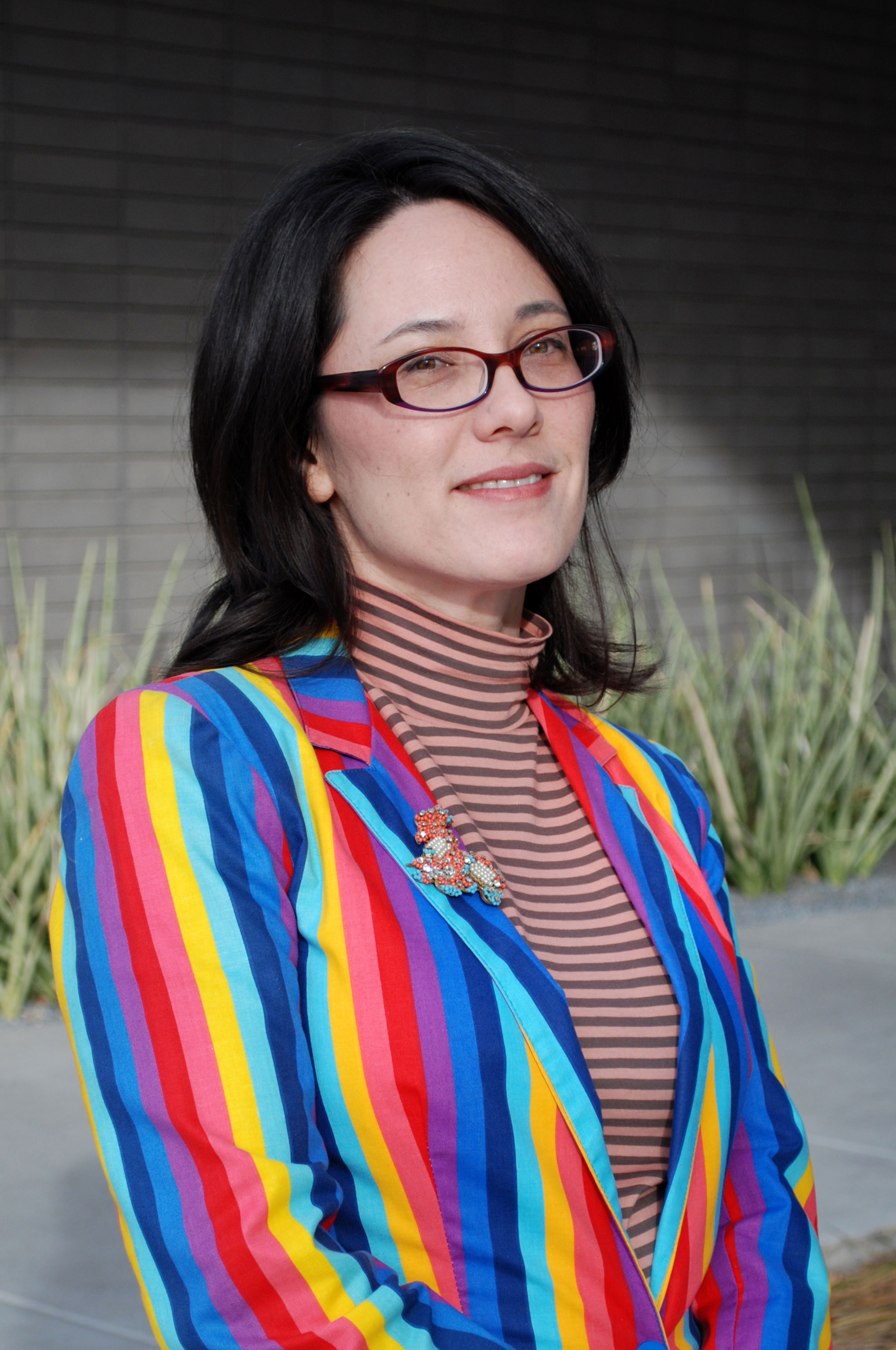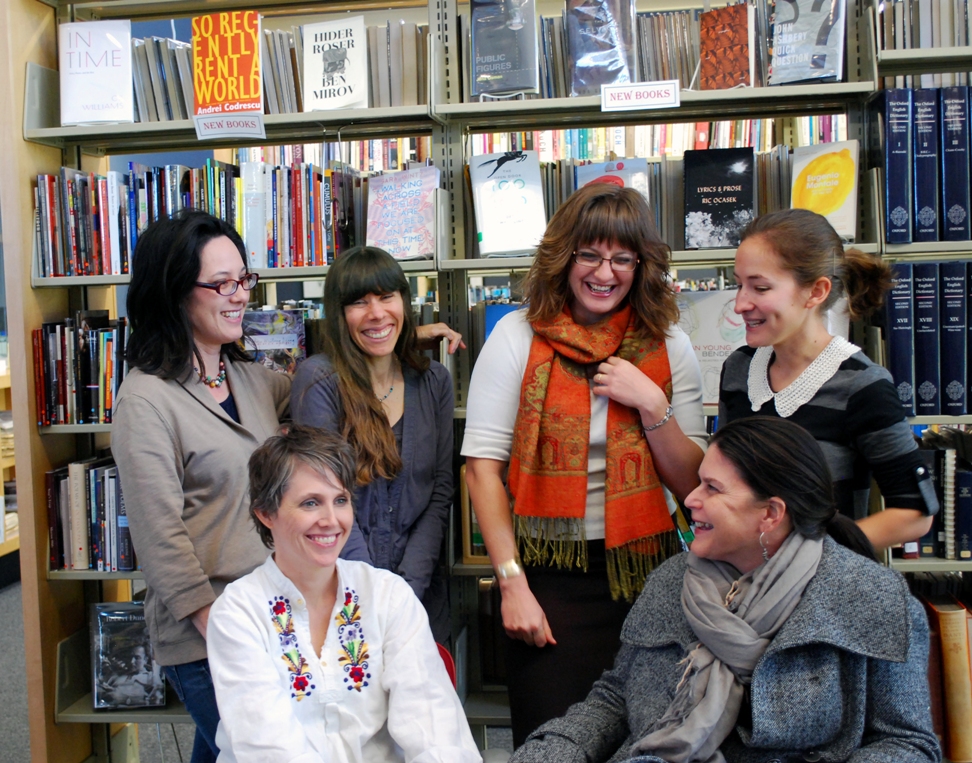Cybele Knowles works as a program coordinator at the University of Arizona Poetry Center, where she coordinates the PW-funded Center’s Reading and Lecture Series, Classes & Workshops program, and Closer Look Book Club. She holds an MFA in fiction from the University of Arizona and an MA in English from U.C. Berkeley. Her poetry and prose have appeared in the Destroyer, Spiral Orb, Diagram, Pindeldyboz, the Asian Pacific American Journal, Faucheuse, and the Prose Poem.
In this post I’m going to lead you on a tour of the University of Arizona Poetry Center. As I think you’ll see, in its design and function, it combines elements of a library, university, theater, community center, garden, workspace, home, aerie, and even church. In Fall 2007, after a decade of envisioning, designing, fundraising, and construction, the Poetry Center moved into this custom landmark building.
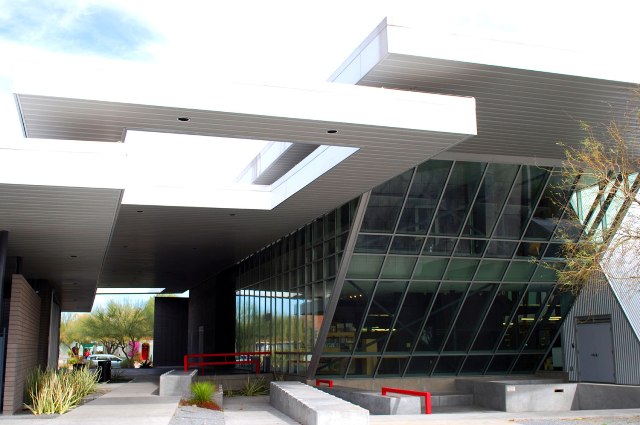
The spaces of the building allow us to do so much more than ever before!

Perhaps most importantly, our entire library collection of over 70,000 items is now housed under one roof. We have open stacks (pictured here), an archive room, and a rare book room.

Here are a few treasures from our rare book room. From top to bottom and left to right: Accidentally on Purpose by Robert Frost (Christmas card). New York: Holt, Rinehart, Winston, 1960. Book of Common Prayer. 1764. Second Avenue by Frank O’Hara. New York: Corinth Books, 1960. Field Talk by Frank Stanford. Seattle: Mill Mountain Press, 1975. Fast Speaking Woman by Anne Waldman. San Francisco: City Lights, 1975. Chartings by Lyn Hejinian and Ray Di Palma. Tucson: Chax Press, 2000.
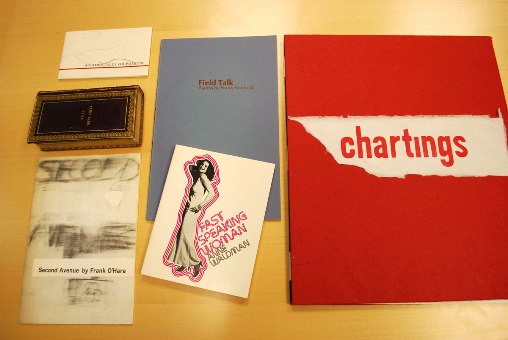
Since our move to the new building in 2007, we’ve been able to mount permanent and rotating exhibits. Here’s my favorite of our permanent exhibits: a collection of posters for Poetry Center readings from the 70s and 80s.
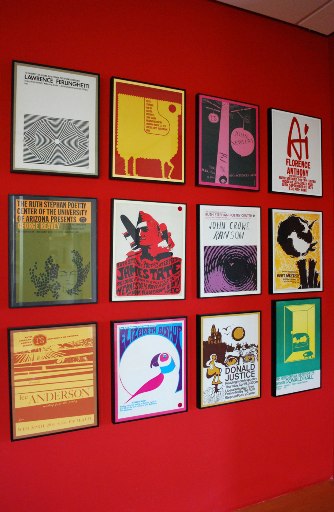
In addition to permanent and library exhibits, we exhibit work by visual artists. Our current art exhibit by Karen McAlister Shimoda (mother of the poet Brandon Shimoda) includes this piece. It’s the artist’s wedding dress, on which she inscribed a history of a history of her marriage, from when she met her husband-to-be through to the divorce.
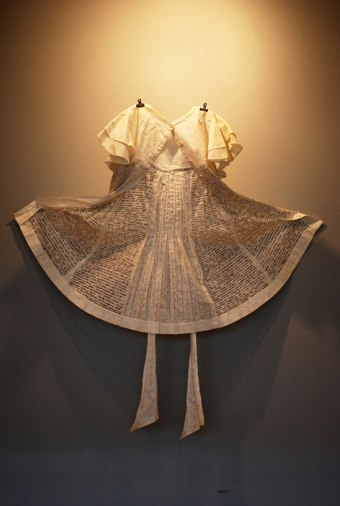
Here’s a close-up. Being a fan of both words and textiles, I’m rabidly in love with this piece.
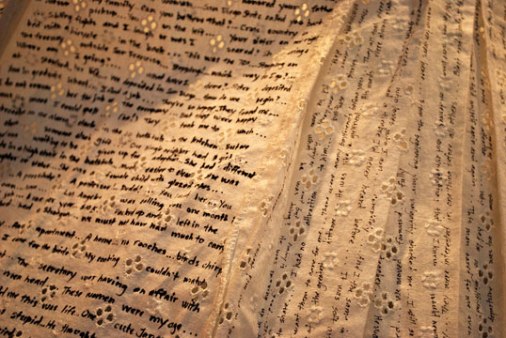
The Poetry Center is bordered by a minimalist meditation garden. In this photo, you can also see the Poetry Center’s “Turning Wall.” Perhaps this wall was inspired by the fact that the word verse comes from the Latin root -vert, for "turn or turn away, bend, incline.”
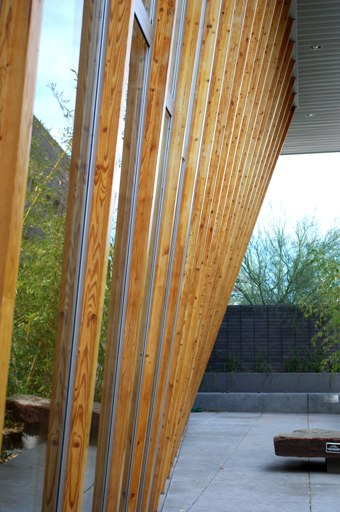
At the back of the meditation garden is this memorial fountain for poet Steve Orlen (1942–2010), creative writing professor at the University of Arizona for decades, and beloved teacher.
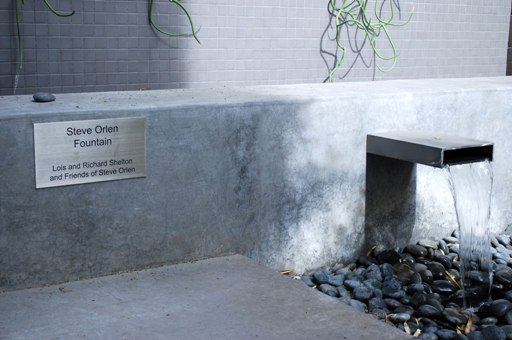
At the opposite end of the building is the room where we hold events that are part of our Reading and Lecture Series, a program supported by Poets & Writers. Here, poet Thomas Sayers Ellis reads his work for an audience of middle- and high-school students.
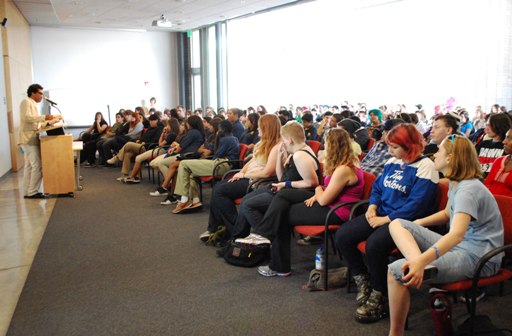
Here’s a special peek into a private space of the Poetry Center: our guest house for visiting poets and summer residents. It’s just steps away from the library, but hidden from view. It’s decorated with broadsides and a few furnishings from the original Poetry Center of 1960.
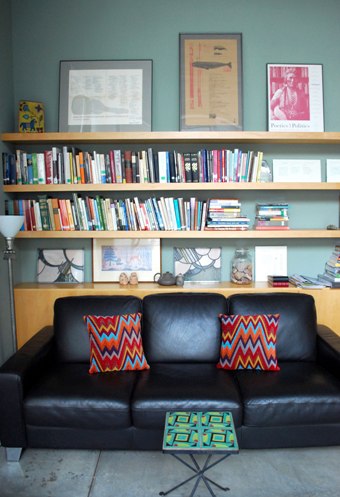
We’ve inhabited the building for five years now, and I have a real fondness for the signs of our habitation. The little details. Like this drawing, hanging in Renee’s office, created during one of our children’s programs...

...this print of H.D. (and her hedgehog) by Gwyneth Scally, commissioned by the Poetry Center, and hanging in the Children’s Corner...
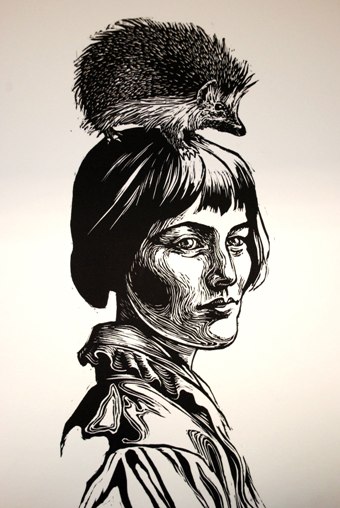
...and this text/art object, created by one of our Classes & Workshops students, abandoned by the creator, but rescued by me, and now displayed in my office.
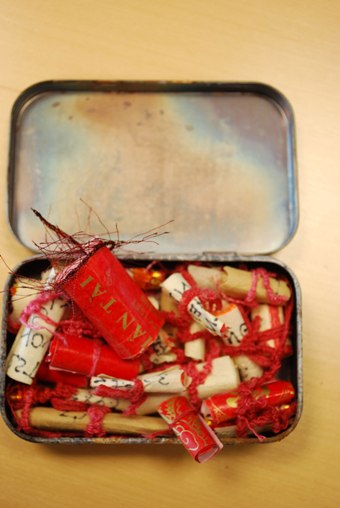
Our virtual tour of the Poetry Center ends here, with the feet of poets Joyelle McSweeney and Zachary Schomburg (who read together at the Poetry Center in September 2012). But there’s a lot more to see; we hope you can stop by for a visit sometime soon!

All Photos Credit: Cybele Knowles.
Support for Readings/Workshops events in Tucson is provided by an endowment established with generous contributions from the Poets & Writers Board of Directors and others. Additional support comes from the Friends of Poets & Writers.




















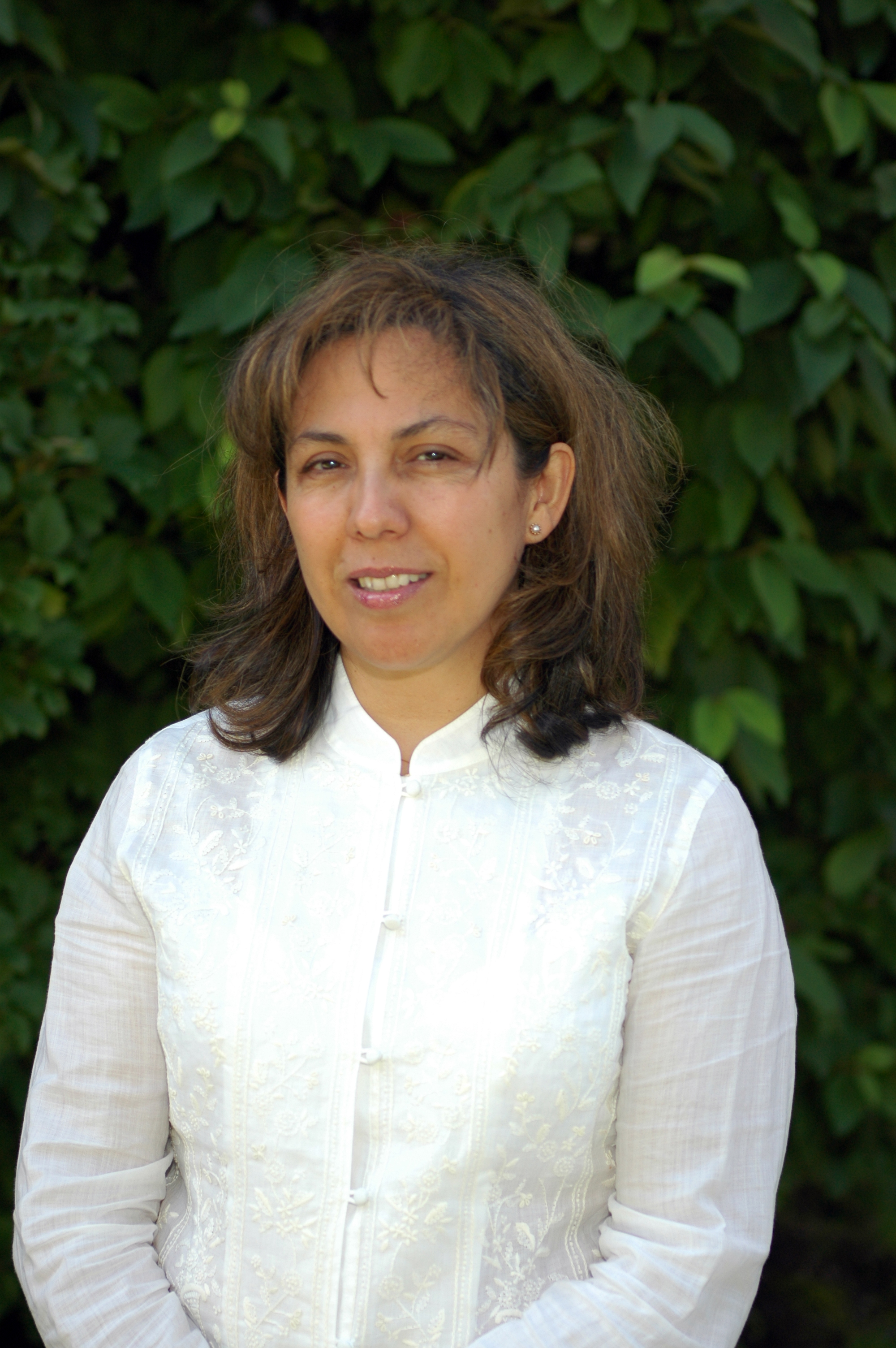 What makes Marick Press unique?
What makes Marick Press unique?